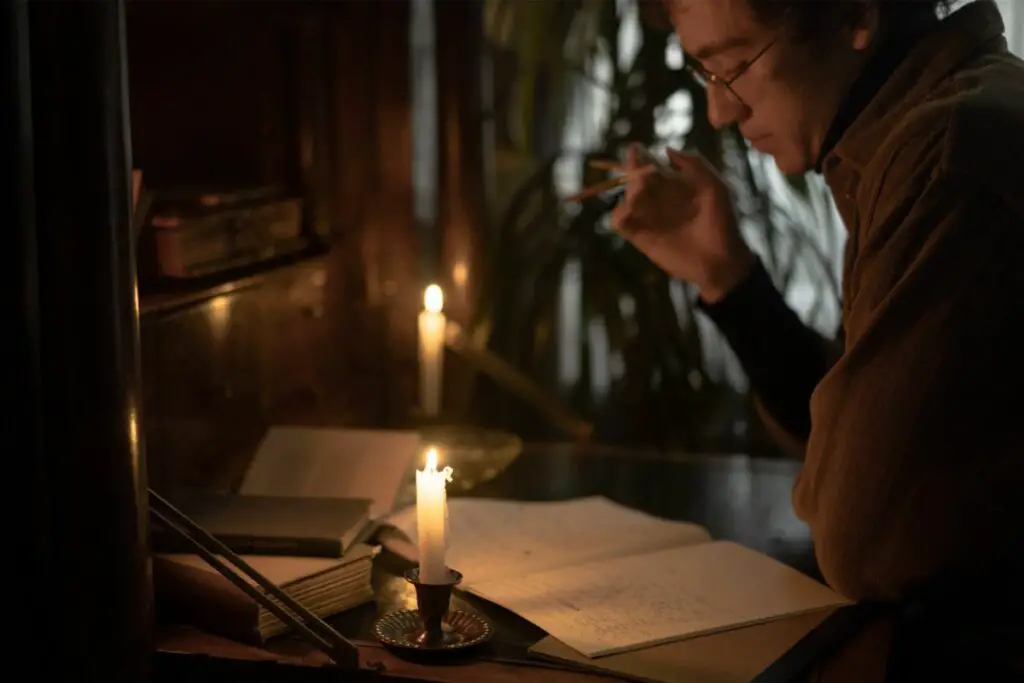What Can Help Slow Down The Pacing Of A Story?
When you’re writing a story, you might feel that the pace is getting too fast, and you’re losing control.

It’s a problem that many writers face and one you’ll have to notice when you’re reading through a first draft.
But how can you slow down the pacing of a story so that it’s not too fast or too slow?
There are multiple ways to slow down a story. In some ways, you need to change your writing: make your sentences longer, add more description, and show your character’s thoughts.
In other cases, you can add more to your narrative through subplots or flashbacks.
Everything you should add to your story should have a purpose.
But let’s go into more detail about how these methods can help your novel.
Be More Descriptive When You Write
You might be more concerned with getting from Point A to Point B in the first draft.
But you don’t have to rush from one area to the next. You can take your time to describe the scene around you.
If you’ve spent any time with an editor or other writers, you’ll find that their issues usually can be solved by thinking: show, don’t tell.
Take the time to show your characters. The landscape is still essential to the world and can make your story more immersive.
Once you use descriptions, the pacing will slow down. You won’t show the audience what happened but how it happened.
However, this doesn’t only have to work for your landscapes.
You should also show your character’s actions and how their bodies react. It’s a better way of gauging a situation than only telling your audience what’s happening.
Let the Reader See Your Character’s Thoughts
Adding a description isn’t the only way to slow down the pace.
When you write, it can help to show what your character’s thinking at the time.
There’s nothing worse than reading a story only to find that your character has made a decision you can’t understand.
By showing the thought process, you can see why your character has made a decision and offer more insight into their perspective.
Adding introspection can be a great way to describe the actions and how they feel in a specific scene.
It’s a way to slow the pacing and include more emotive reactions. It’s easy to tell the story but harder to show how your characters drive the plot forward.
Adding more depth to your protagonist’s thoughts can help inform the reader about the world you’ve created. So don’t be afraid to include their thoughts.
Write With Longer Sentences
Short sentences make your story move at a faster pace, while longer sentences will have the opposite effect.
That doesn’t mean you have to make your sentences ridiculously complex and add unnecessary words.
However, it does mean you can think more about the words that you choose.
Using lengthier sentences can be a great way to add more description to your work.
These can allow you to choose how you’re showing your story carefully. Many examples of longer sentences are used in several literary works.
By using longer sentences, you’ll be able to show how they react to a description.
Then, if you want to speed up the pace, you can use shorter sentences that are quick and to the point.
Add Subplots To Your Story

The pace of your novel may be due to your focus on the main plot, but subplots can help slow your narrative down.
If you include more subplots, you will take longer to reach the end of your main storyline.
However, that doesn’t mean you have to include too many new subplots.
If your story has too many, you can’t just abandon them, or they become plot holes.
Too many new subplots can cause you to lose control of your narrative, so it’s always best to include them where they make sense.
After all, there’s nothing worse than having a subplot forced into the narrative.
If you include more subplots in your story, you should make sure they make sense.
Including one and then forgetting about it will just bother your readers. But subplots done well can make a narrative far more interesting.
Incorporate Flashbacks And Backstory
Backstory and flashbacks can help your audience understand your protagonist’s past.
However, they should also be treated carefully. Flashbacks can be dangerous and shouldn’t be used to slow down the pace, but they can have that effect.
Instead, you should include them if they’re necessary. You don’t need a character’s backstory or a flashback to a past event if it’s had no impact on your narrative.
While it can be used as a device to learn more about your characters, you should always use flashbacks and backstories carefully.
Why Does Pacing Matter?
Pacing can be a challenge for new and seasoned writers. While you may think that your characters and story will be the main focus, that’s not necessarily the case.
The pace of your story sets the tone and mood, and it needs to have the right balance.
Action-packed stories such as thrillers need to have a fast pace.
They’re meant to be quick. But not everything has to be that way; some stories need to slow down. They need to take their time.
That’s not to say that you need to write at one pace exclusively; instead, you need scenes with a bit of both.
It adds more variety to your story and can keep your readers hooked until the end.
Final Thoughts
If you don’t pace your story correctly, your readers may drop the book. Novels with an exclusively fast pace will feel rushed.
However, slow-paced novels can be a challenge to read if they have to take so much time to read them.
The best way to write a novel is by using a mixture of both to find a balance between them.
That way, your readers will be hooked and inevitably get more enjoyment out of your story.
Alan Reiner
Hi, my name is Alan Reiner and I have been in the writing industry for almost seven years. I write articles that can span from 200 words all the way to 20,000 words every single day. How do I do it? With a lot of determination. All my way through school and college, I hated long-form assignments. I could never get into the groove of working on one piece for an extended period of time. My pieces were always late because I didn’t have the motivation to type them, let alone edit them.






![How Many Words in a Novel? [A Word Count Guide]](https://word-counter.com/wp-content/uploads/2022/09/How-Many-Words-in-a-Novel-A-Word-Count-Guide-1024x683.jpg)

